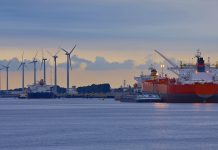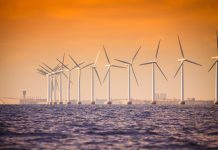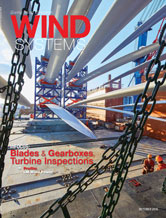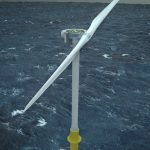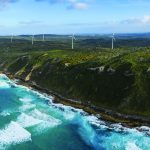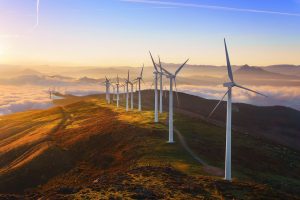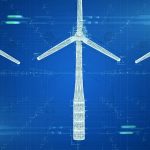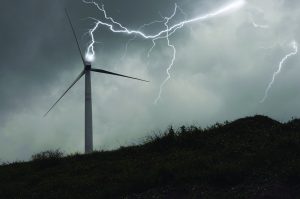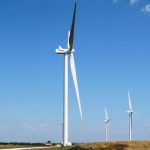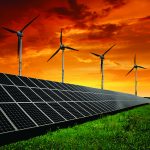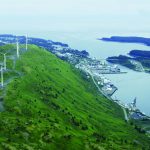Some surprising findings about how the wind behaves at the Cape Wind tower near Nantucket Sound might end up being good tidings for offshore wind in the U.S.
A recent study published in the Journal of Geophysical Research: Atmospheres shows the wind in that area is unstable more than 60 percent of the time.
On the surface, “unstable” would seem to be have a negative connotation, but not so when it comes to wind power.
Researchers analyzed more than 10 years of data collected at the Cape Wind tower including data gathered from newly installed instruments as well as information recorded by airplane flyovers, said lead researcher Cristina Archer.
That dataset was used to determine the nature of the wind surrounding the tower. Was it unstable, stable, or neutral?
Understanding Atmosphere
Which one of those designations the wind falls into has to do with the thermal stratification of the atmosphere and the atmosphere in general, according to Archer, an associate professor at the University of Delaware in the College of Earth, Ocean, and Environment’s School of Marine Science and Policy and Department of Geography and a governing member of the Center for Carbon-free Power Integration.
Archer explains that the forces behind the atmosphere’s behavior are a little complicated, but understanding how the atmosphere behaves is key to understanding how wind behaves.
In an unstable or turbulent atmosphere, the air is vigorously mixed with eddies, Archer said. The heat comes up from the surface, which causes warmer air to rise and cooler air to go down where it gets mixed. In an unstable atmosphere, the turbulent mixing also brings down the stronger winds from aloft, resulting in relatively uniform distribution of high winds around the hub height of wind turbines, which is typically greater than 100 meters offshore.
“Unstable conditions are generally beneficial for wind energy production because all that high wind that usually is above is mixed down,” Archer said. “So you get high winds closer to the surface of the water and around the turbine rotor. There is vigorous mixing; there are eddies, and there is turbulence when the atmosphere is unstable.”
That turbulence does have a downside, because it can cause undue stress on the turbine blades.
Unstable Advantage
“But it also has a hidden benefit,” Archer said. “You have a farm, so now you have more than one turbine. So there is a turbine in front, and there is a turbine behind it. The turbine behind has less wind than the one up front because the turbine up front takes away some of the wind. But if you put the second turbine farther and farther away from the first, then eventually it’s unaffected by the presence of the first turbine.”
That gap between turbines is called the wake.
“If the atmosphere is unstable, this wake is short, and if the atmosphere is stable, then this wake can be very long,” Archer said. “There’s a long ‘tail’ behind the front row.”
Another advantage of what Archer and her team found at Cape Wind is that, since the wind is unstable, turbines in a wind farm would have shorter wakes.
“You can place these turbines closer to each other, which is a benefit because when you have a lease for building a farm, maybe originally you were planning to put 10 turbines in it because you had to have enough space for the wake to dissipate,” she said. “But now you can put, say, 12 in because the wakes are actually on average shorter than previously thought.”
This unstable atmosphere has three effects, according to Archer.
It brings in more wind, the turbulence could have an adverse effect on blades, and shorter wakes mean more turbines in a wind farm.
“So the story is more positive than negative, because we have more wind and shorter wakes,” Archer said. “So we can actually generate more power.”
The findings — whatever the possible benefits for U.S. offshore wind — were surprising, she said.
The researchers expected the wind at Nantucket Sound to behave much like it does in Europe.
“But it didn’t,” Archer said.
The atmosphere at European sites is neutral about 60 percent of the time, according to Archer. But at Nantucket, it is unstable 61 percent of the time.
“Stable and unstable are kind of like the extreme cases, and neutral is the common assumption,” she said. “And we found at Cape Wind, it’s actually unstable most of the time, which is surprising.”
It’s too soon to tell whether this phenomenon is unique to Cape Wind or if it is indicative of other parts of the U.S. coast leased for offshore wind. But Archer said her team plans to look at data from the Block Island Wind Farm — America’s first offshore facility — to see if it mimics the Cape Wind findings.
If it does prove to be a common occurrence, the unstable wind factor certainly will affect how future wind farms are planned, according to Archer.
“Turbine manufacturers want to know how turbulent your environment is because there might be some design in support of the blades for high turbulence versus low turbulence,” she said. “So that’s another factor that could be important to know in the U.S. now that we have offshore wind finally.”
Wind-Farm Design
Predominant unstable wind also will determine how wind farms are designed.
“Right now, we’re optimizing with neutral conditions under the assumption that it was working for Europe, and that’s how we designed the farms,” Archer said. “Design for unstable conditions (means) you can add more turbines, and the distances between the turbines can be shorter, and so the farm might look different.”
The layout of a wind farm is crucial to making sure it captures the optimal amount of wind.
“We’ve already found that you almost never want to have a regular layout,” Archer said. “If you have a regular, grid-like layout, there will be some directions in which a lot of turbines are interfering with each other. If you have an irregular layout, then the chance that the wind will be aligned with more than a few turbines is none, so you will only have a few turbines that are in alignment with each other.”
In order to achieve that, the fewer turbines interfering with each other, the better.
“And knowing whether (the atmosphere) is unstable or neutral or stable is actually very important because you will have different spacing,” Archer said.
The research team for the paper, titled “On the Predominance of Unstable Atmospheric Conditions in the Marine Boundary Layer Offshore of the U.S. Northeastern Coast,” includes University of Delaware professors Dana Veron and Fabrice Veron, and Stony Brook University professor Brian Colle and his student Matthew Sienkiewicz.
















